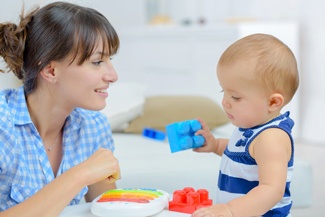Can infants distinguish a good leader from a bully?
 “Bed time!” Imagine 21-month-old babies watching a short cartoon where characters interact with someone who asks them to go to bed. This protagonist may be depicted either as a good leader or as a despot. From this experiment, the researchers tried to determine if infants are capable of distinguishing between a good leader and a bully.
“Bed time!” Imagine 21-month-old babies watching a short cartoon where characters interact with someone who asks them to go to bed. This protagonist may be depicted either as a good leader or as a despot. From this experiment, the researchers tried to determine if infants are capable of distinguishing between a good leader and a bully. The study, carried out by researchers from the Department of Psychology and Cognitive Science at the University of Trento (Italy) and from the Department of Psychology at the University of Illinois (USA) focused on the distinction between these two major types of social power. One is based on authority, the other on intimidation. Previous studies have shown that infants are capable of distinguishing between characters based on the power they exert over others. For example, Renee Baillargeon cites that babies have a tendency to gaze longer at scenarios where bigger protagonists turn to smaller ones, and that infants can show surprise when a usually victorious character loses in a confrontation with another character. Nevertheless, the ability of babies to distinguish between different types of power had never really been demonstrated.
For their research, the scientists used the standard approach to evaluate the “responses” of the infants, who obviously can’t yet express their reasoning to adults: the analysis of visual behavioral. More specifically, the method known as the “violation of expectations” is based on the following observation: young babies will fixate longer on situations that contradict their expectations.
A series of animations was used to show characters interacting with an individual alternatively depicted as a kind person (without any obvious power), a leader, or a tyrant. The research team first tested short cartoons with adults (undergraduate students at the University of Illinois) to ensure they were able to identify the three possible facets of the protagonist (which they were able to do). Next, the scientists studied the visual behavior of infants to whom they had shown the various animations.
In a first experiment, the babies watched a double scenario in which a (physically differentiated) leader or a tyrant ordered three characters to go to bed. At first, the characters obeyed, but in a second phase, when the leader or tyrant went away, they either continued to obey or disobeyed. In the second experiment, the physical differences between the leader and the brute were erased. And in the third, a kind character was introduced in order to determine whether the very young participants would react more to the protagonist’s kindness, rather than to the leader or bully’s status.
For the first two experiments, the results indicated that the infants expected the characters to continue to obey after the leader’s departure. However, they had no particular expectations in the "tyrant" condition, as if to suggest that they believed the characters were staying in bed out of fear, but could get up once the "despot" was no longer there. In the final experiment, the babies expected the characters to disobey when the kind person left. According to the authors, this is probably because the protagonist didn’t appear to have any power over them.
R. Baillargeon believes that these results indicate that “by 21 months of age, infants already hold different expectations for subordinates' responses to individuals with respect-based as opposed to fear-based power.”
Source: Francesco Margoni, Renée Baillargeon, Luca Surian Infants distinguish between leaders and bullies, in PNAS, Sept. 2018. University of Illinois website: https://news.illinois.edu/view/6367/689187







